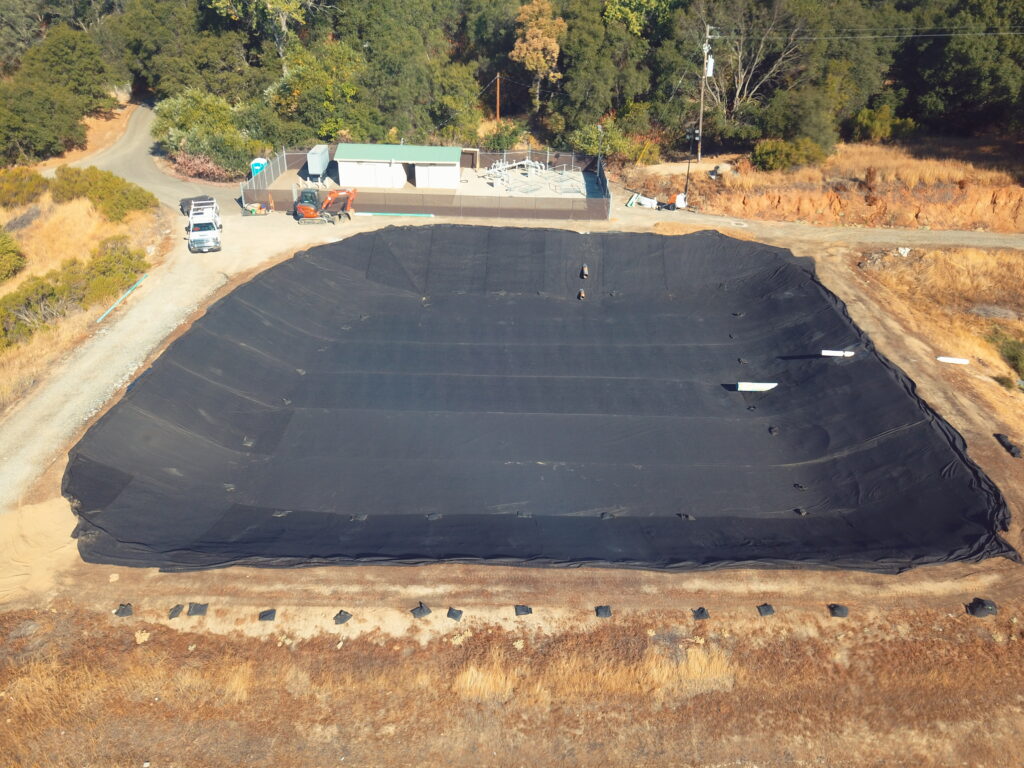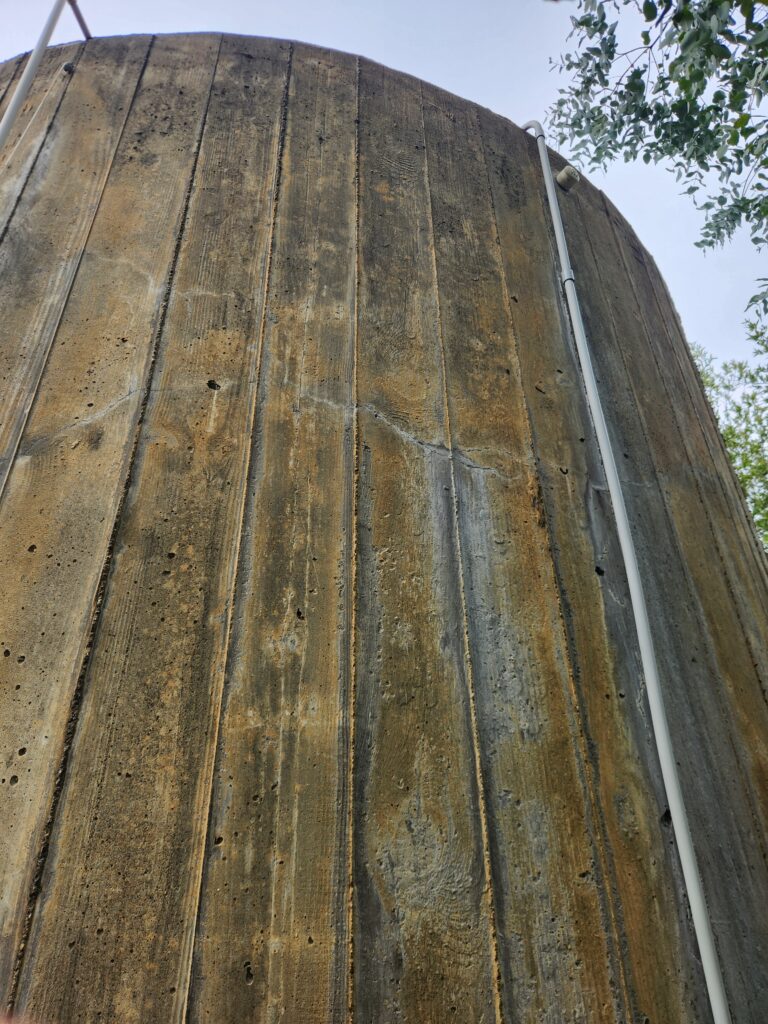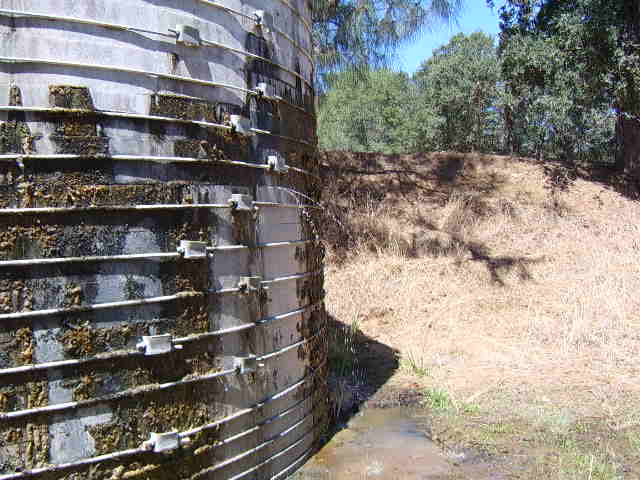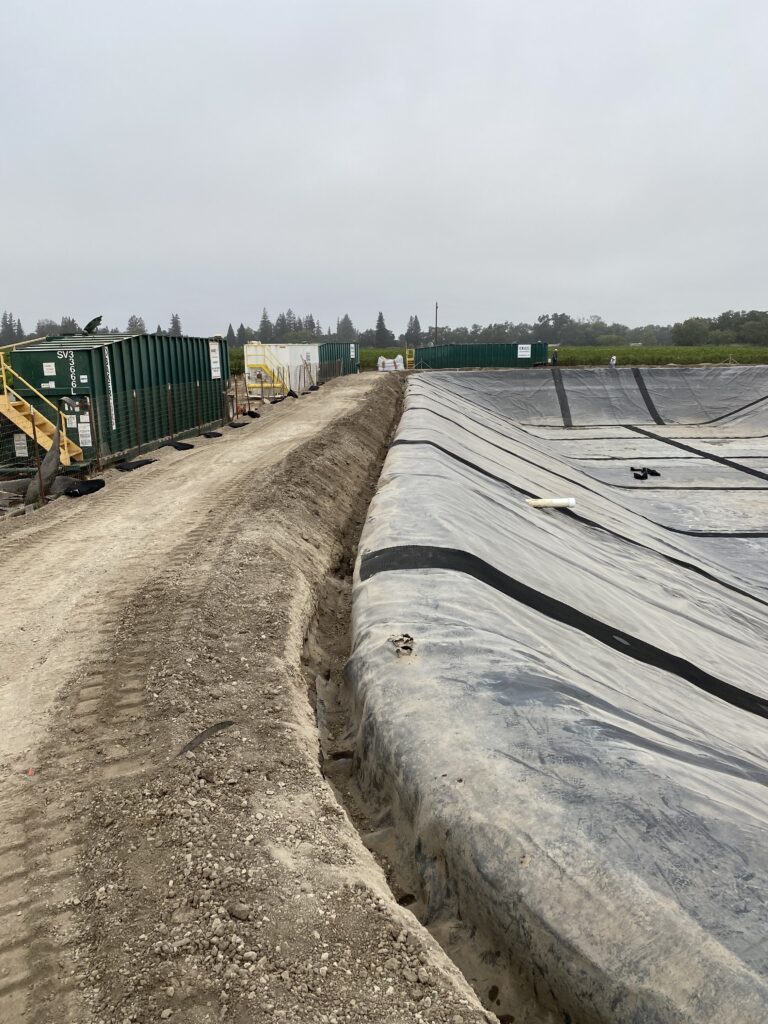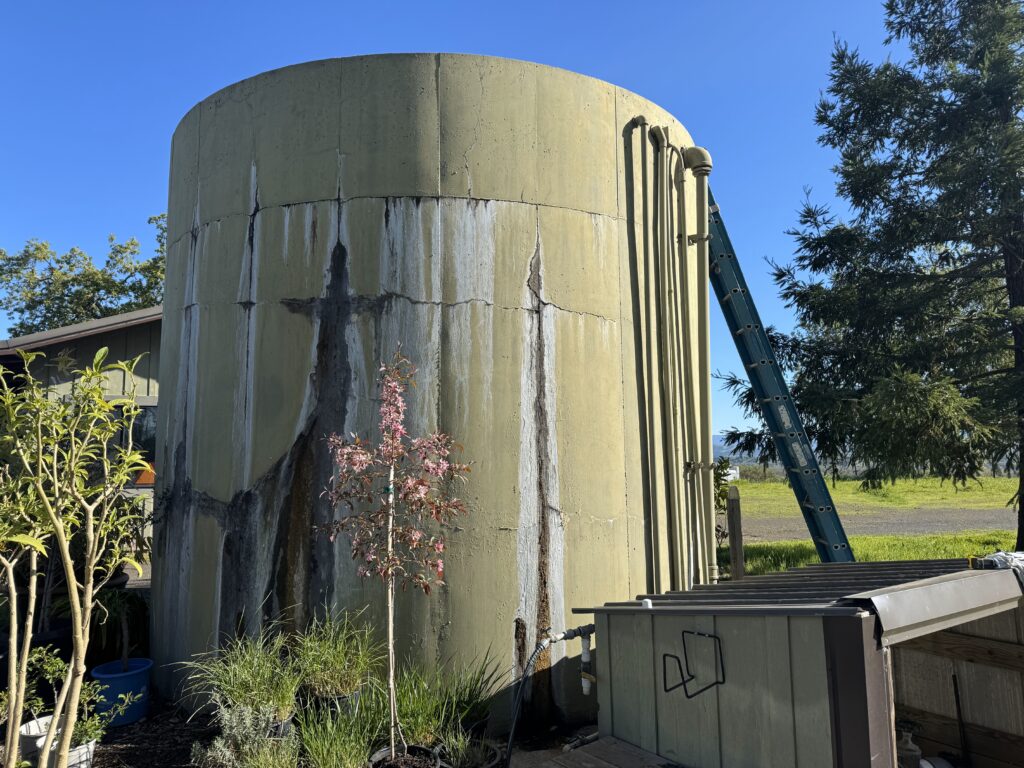
In places where the weather changes from life-threatening droughts to torrential downpours, emergency preparedness is an absolute necessity. A water tank is a must for regions under constant risk of such weather. Whether for drinking water, wildfire protection, or daily use, a reliable water supply ensures life can go on uninterrupted.
Carson Liners provides durable, custom-fit water tank liners that help protect and preserve your stored water. Ensuring your tank is ready when it’s needed most. To understand how to best protect this essential commodity, it’s important to identify potential threats.
Common Water Tank Issues
No matter what part of the country you live in, water tanks are exposed to tough conditions year-round. In regions like California, where earthquakes, drought, wildfires, and floods occur more often, rapid deterioration is likely. But whatever the environment, all tanks face similar aging and structural challenges. Bottom line, the elements significantly impact the reliability of water storage systems. And in the end, this greatly affects the quality of water inside them.
Let’s look at some types of tanks and the risks they pose when left unaddressed.
Concrete Tanks: When Concrete Tanks Crack Under Pressure
Concrete tanks are known for their durability and strength, but they’re not indestructible. Over time, tanks can develop stress cracks, which pose a serious problem if left unaddressed. Before we delve into how to fix concrete cracks, it’s essential to understand why they occur in the first place.
Why Do Concrete Tanks Crack?
- Ground Movement
- Thermal Expansion & Contraction
- Aging Infrastructure
Natural soil shifts from seismic activity, construction, or settling apply uneven stress to the tank structure. This can lead to horizontal or vertical cracks. Additionally, concrete expands in hot weather and contracts in cooler temperatures. These thermal changes cause stress. As concrete tanks age, the supporting materials begin to deteriorate. Older tanks may have outdated construction methods or lower-quality materials. These factors make them more susceptible to cracking.
While the causes of stress cracks may seem like natural and gradual processes, the consequences can escalate quickly if these cracks are left untreated. These stress cracks open the door to a host of problems, some of which aren’t just costly, but also hazardous. Stress cracks might seem small at first, but they can:
- Lead to leaks that waste thousands of gallons of water
- Accelerate corrosion of internal reinforcements, weakening the structure
- Contaminate the surrounding soil, especially in tanks storing chemicals or wastewater
- Violate environmental regulations, resulting in fines or shutdowns
Fixing damaged tanks is a necessity. However, there are affordable, reliable alternatives if repairing or replacing immediately isn’t an option. Tank liners are the answer. Carson Liners’ professionals know tanks. They know what types of liners are best suited for your tank’s needs.
While concrete tanks are a widespread option for permanent, large-volume uses, steel tanks are versatile and more commonly used throughout the country. Known for their durability, flexible design and well-rounded use, steel tanks are often used for water or to store chemicals. Because of these uses, it’s important to understand how to best protect your steel tank.
Steel Tanks: Your Tank’s Best Defense Is an Inside Job
If you’ve got a steel tank, especially in a coastal or humid part of the country, it’s no surprise that rust shows up fast and grows rapidly. Corrosion is a real problem. The salty air influences the life of your tank.
Just because a steel tank seems solid on the outside doesn’t mean everything’s fine on the inside. In coastal parts of California, the environment works against you — sea air, salty wind, and relentless sunlight all team up to wear down storage tanks from within. By the time the damage shows up, it’s often already serious.
If you’ve been fighting rust with a cycle of sanding, welding, coating, and repainting, you already know how exhausting it is. Not to mention expensive. Every round of repairs means more downtime, more labor, and more uncertainty. There’s always that lingering question: how long until we’re doing this all over again?
The solution? Don’t wait for things to fall apart. A custom-fitted liner provides your tank with the internal protection it needs before problems arise, saving you money and stress in the long run.
Concrete tanks are durable. Steel tanks are versatile. And while both offer many attributes ideal for storage, wood tanks offer these same perks but with the warmth and classic beauty only natural materials provide. Despite their beauty and durability, they aren’t without problems of their own. Let’s look at some.
Rotting Redwood and Wooden Tanks: Preserving the Classics
Wood is Beautiful, but It’s Not Forever
Redwood and other wooden tanks are naturally resilient, but they’re still organic materials. Over time, constant exposure to water, sun, and temperature changes causes the wood to shrink, swell, and slowly deteriorate.
Rot, Warping, and Cracks Develop Quietly
You may not notice the damage right away, but inside the tank, trapped moisture creates the perfect environment for wood rot, mildew, and microbial decay. As the wood weakens, it starts to bow, split, or crack, often from the inside out.
Leaks Lead to Water Loss and Structural Risks
Once the integrity of the wood is compromised, leaks become inevitable. What begins as a drip can quickly escalate into gallons of lost water, damage to the surrounding area, and in some cases, complete tank failure.
Replacement Isn’t Always an Option
Fully rebuilding a wooden tank can be expensive, time-consuming, and may erase the charm or historical value of the original structure. For many landowners, replacement simply isn’t feasible or desirable. But not just any tank liner will do. Water is the source of life, they should be made the best materials. Carson Liners’ team of experts knows what a quality liner looks like.
So, even for the beautiful wood tanks, tank liners are an affordable, reliable option. A high-quality liner from Carson Liners isn’t just a temporary fix — it’s a comprehensive solution that shields your tank’s interior from these environmental stressors, effectively restoring and preserving your investment for the long haul.
Why California Tank Owners Trust Carson Liners
California’s conditions make tank liners especially important. Frequent changes in weather strain tanks, no matter the material. With this unpredictability, water conservation needs to be a top priority. At Carson Liners designs tank liners that are:
- Custom-fit to your tank’s exact dimensions and material
- Made from durable, potable-water-safe materials
- Engineered to withstand both hot, dry climates and seismic shifts
But tank liners from Carson aren’t just for the West Coast. Across the country, storage tanks face their own challenges, and liners are a practical solution wherever you are.
Why a Tank Liner is Smarter Than a Replacement
Replacing a water tank is expensive, disruptive, and time-consuming. In most cases, a liner does the job at a fraction of the cost. At Carson, liners are:
- Quick to install
- Custom-built for each tank’s shape, size, and material
- Backed by years of expertise in tank restoration and containment
Whether your tank is concrete, steel, or wood, Carson Liners has a proven solution to help you get more life out of it while protecting your water and your wallet. With custom designs, professional installation, and materials that hold up under pressure, there’s no better way to secure your water supply.
For more information on the importance of quality fabrication in liner manufacturing, speak to one of our experts. Fill out the form below or email us at sales@carsonliners.com.

